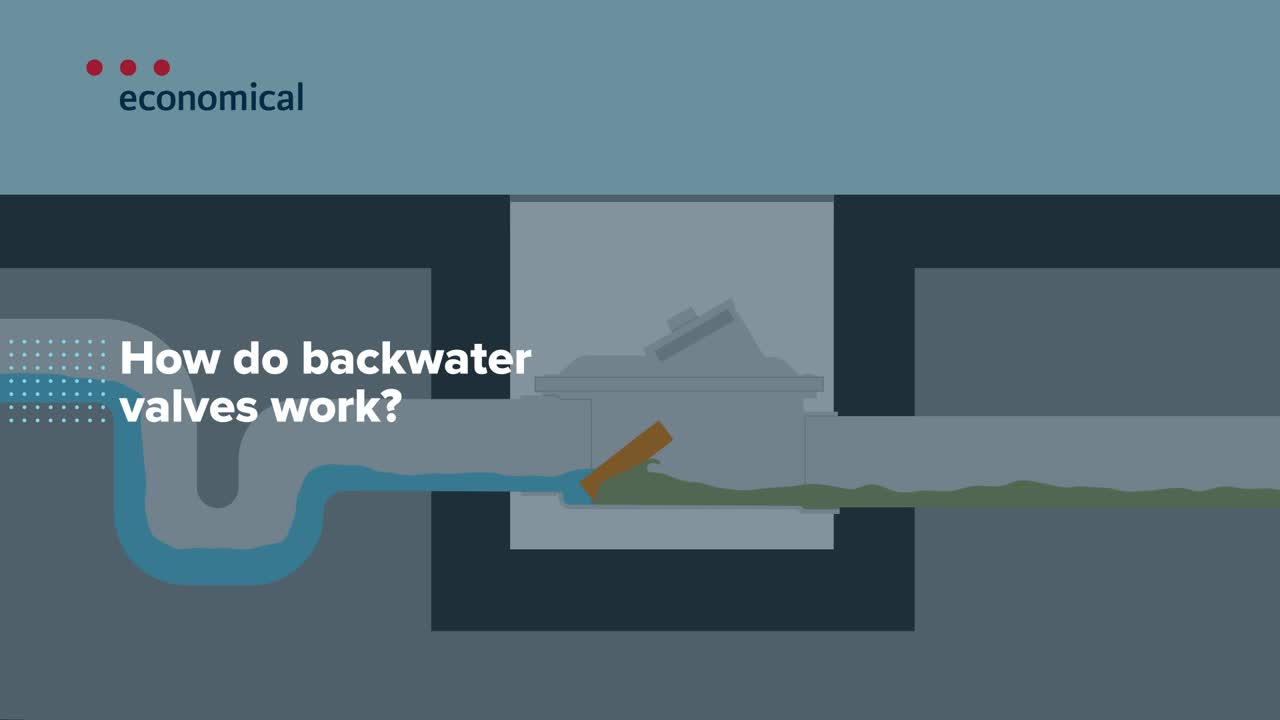A sewer backup can be caused by anything from clogged or grease-filled drains to tree roots, collapsed sewer lines, or heavy rain — and once a backup begins, it can do a lot of damage. The good news is there’s a simple way you can minimize your risk of having backed up sewage flow into your home: installing a backwater valve.
While backwater valves aren’t suitable for every home, consider having your plumbing system inspected by a professional, and — if your home qualifies — having a backwater valve installed. This could help prevent the costly damage the can be caused by a sewer backup. Learn how backwater valves work and how you can keep yours running smoothly.
What is a backwater valve?
A backwater valve (sometimes called a backflow valve) is a device that reduces the likelihood that sewage will flow into your basement when the main sewer system becomes overwhelmed and begins to back up.
How do backwater valves work?
A backwater valve allows water from your toilets, sinks, and bathtubs to flow out of your home and into the main sewer system. If water begins to flow backwards, from the city’s pipes and into yours, the flap on the backwater valve will close and stop the water from entering your home.
Let’s take a closer look:

- When everything is running smoothly, your backwater valve allows water to flow out of your home and into the main sewer system.
- In the event of a sewer backup, when water starts to flow from the main sewer system back into your home, it lifts a small floatation device that triggers the flap on your backwater valve to close, preventing sewage from backing up into your pipes.
- The flap will fall open again once the water begins flowing in the right direction.
- Without a backwater valve, a sewer backup could do a lot of damage.
Don’t let roundabouts drive you around the bend. Drive safely out there.
How do I know if my home has a backwater valve?
Backwater valves are required by some municipalities and recommended by others. If you have a newer home, a backwater valve may have been installed during construction. If you aren’t sure, take a look around your basement — backwater valves are usually located in the floor and have a cover that can easily be removed for maintenance. The cover itself is likely round, but there may also be a rectangular panel on top. If you have a sump pump, the backwater valve is likely close by.
Are all backwater valves the same?
There are several different types of backwater valves, and they are not all created equal. According to the Insurance Bureau of Canada, some types of backwater valves (like the plug type) aren’t recommended, as they can allow sewer backup pressure to build up under your basement floor, which can cause structural damage to your home.
How can I keep my backwater valve in good working order?
While each backwater valve is different and should be maintained according to the manufacturer’s recommendations, there are a few simple steps you can take to keep your backwater valve flowing smoothly:
- Open the cap and check for debris every two or three months (or before a heavy rainstorm). Make sure you wear protective gloves and eyewear.
- Flush the valve with a bucket of water or garden hose to remove any debris.
- If grease or other debris stays put, scrub the valve to clean it.
- Once you’ve cleaned the valve, put the cap back on and make sure it’s secure.
Why should I install a backwater valve?
Backwater valves are just one of many ways to prevent flooding in your home. Besides preventing a damaging sewer backup (and the costly repairs that could come with it), a backwater valve could also help save you money. Some municipalities offer rebates to homeowners who install backwater valves, and most insurance companies offer home insurance discounts, too.
My home doesn’t have a backwater valve, but I want to install one. What’s next?
A backwater valve should be installed by a licensed plumber who will dig into your basement floor and remove a short piece of the sewer lateral (the pipe that transports waste water from your home and into the sewer), and replace it with a backwater valve. You may also need to take steps like disconnecting your foundation drain and eavestrough downspouts from your home’s weeping tile and sewer system. Every home and drainage system is different, so arrange to have your plumber contact your local government to set up an inspection and obtain any necessary permits before installing the system.
If you’re thinking about installing a new backwater valve, talk to your group’s licensed broker to make sure you have the right home insurance coverage and find out if you qualify for a discount.
Want to help your neighbours avoid the hassle of a sewer backup, too? Share this article on Facebook or Twitter.